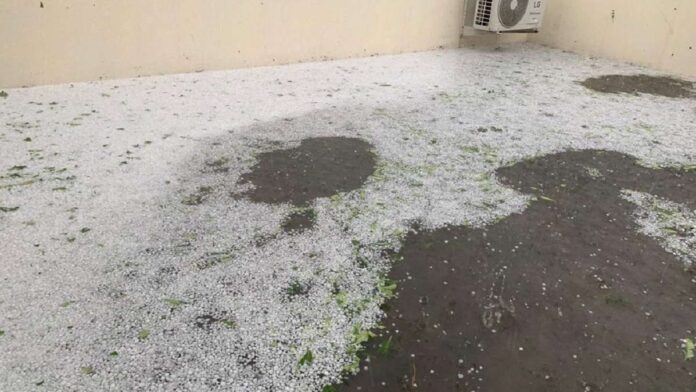Mizoram, known for its picturesque landscapes and serene beauty, is currently reeling from the aftermath of severe weather conditions that have wreaked havoc across the state. Heavy rains and hailstorms have swept through various districts, leaving a trail of destruction in their wake and causing extensive damage to over 450 houses. As communities grapple with the aftermath of the disaster, urgent relief efforts are underway to provide assistance and support to those affected.
The recent bout of inclement weather in Mizoram has caught residents and authorities off guard, with many areas experiencing unprecedented rainfall and hailstorms. The sudden onset of adverse weather conditions has exacerbated vulnerabilities in housing infrastructure, particularly in rural and remote areas where houses are often constructed with lightweight materials and lack adequate protection against natural disasters.
Reports from affected districts paint a grim picture of the scale of devastation wrought by the heavy rains and hailstorms. Roofs have been blown away, walls have collapsed, and entire homes have been submerged in floodwaters, leaving families homeless and vulnerable. In some areas, landslides triggered by the incessant rainfall have blocked roads and disrupted transportation, further compounding the challenges faced by rescue and relief efforts.
The impact of the severe weather has been particularly acute in vulnerable communities, including those living in makeshift shelters or in low-lying areas prone to flooding. Vulnerable populations, such as the elderly, children, and persons with disabilities, are especially at risk, facing heightened exposure to the elements and limited access to essential services and resources.
In response to the crisis, local authorities, disaster response teams, and humanitarian organizations have mobilized efforts to provide immediate relief and support to affected communities. Emergency shelters have been set up to accommodate displaced families, while relief supplies, including food, water, blankets, and medical aid, are being distributed to those in need.
The Mizoram state government has also announced measures to provide financial assistance and relief materials to families affected by the disaster. Chief Minister Zoramthanga has pledged to extend all possible support to the affected communities and has directed officials to expedite relief operations and ensure the timely delivery of assistance to those in need.
Beyond the immediate response to the disaster, the heavy rains and hailstorms in Mizoram underscore the urgent need for long-term solutions to enhance resilience and mitigate the impact of extreme weather events. Climate change, with its unpredictable weather patterns and increasing frequency of natural disasters, poses a significant threat to vulnerable communities, highlighting the importance of proactive measures to build resilience and adapt to changing climatic conditions.
Investments in resilient infrastructure, early warning systems, disaster preparedness, and community-based adaptation initiatives are essential to strengthening the capacity of communities to withstand and recover from the impacts of climate-related disasters. Additionally, efforts to raise awareness about climate change, promote sustainable land use practices, and enhance disaster risk reduction strategies can help mitigate the risks associated with extreme weather events.
The recent disaster in Mizoram also underscores the interconnectedness of climate change and socio-economic vulnerabilities, with marginalized communities disproportionately bearing the brunt of environmental degradation and natural disasters. Addressing these underlying vulnerabilities requires a holistic approach that addresses socio-economic inequalities, promotes inclusive development, and empowers communities to build resilience to climate change.
As Mizoram grapples with the aftermath of the heavy rains and hailstorms, it is essential for all stakeholders, including government agencies, civil society organizations, and the private sector, to work together collaboratively to provide support and assistance to affected communities. By prioritizing the needs of the most vulnerable and investing in long-term resilience-building efforts, Mizoram can emerge stronger and more resilient in the face of future challenges posed by climate change and natural disasters.




